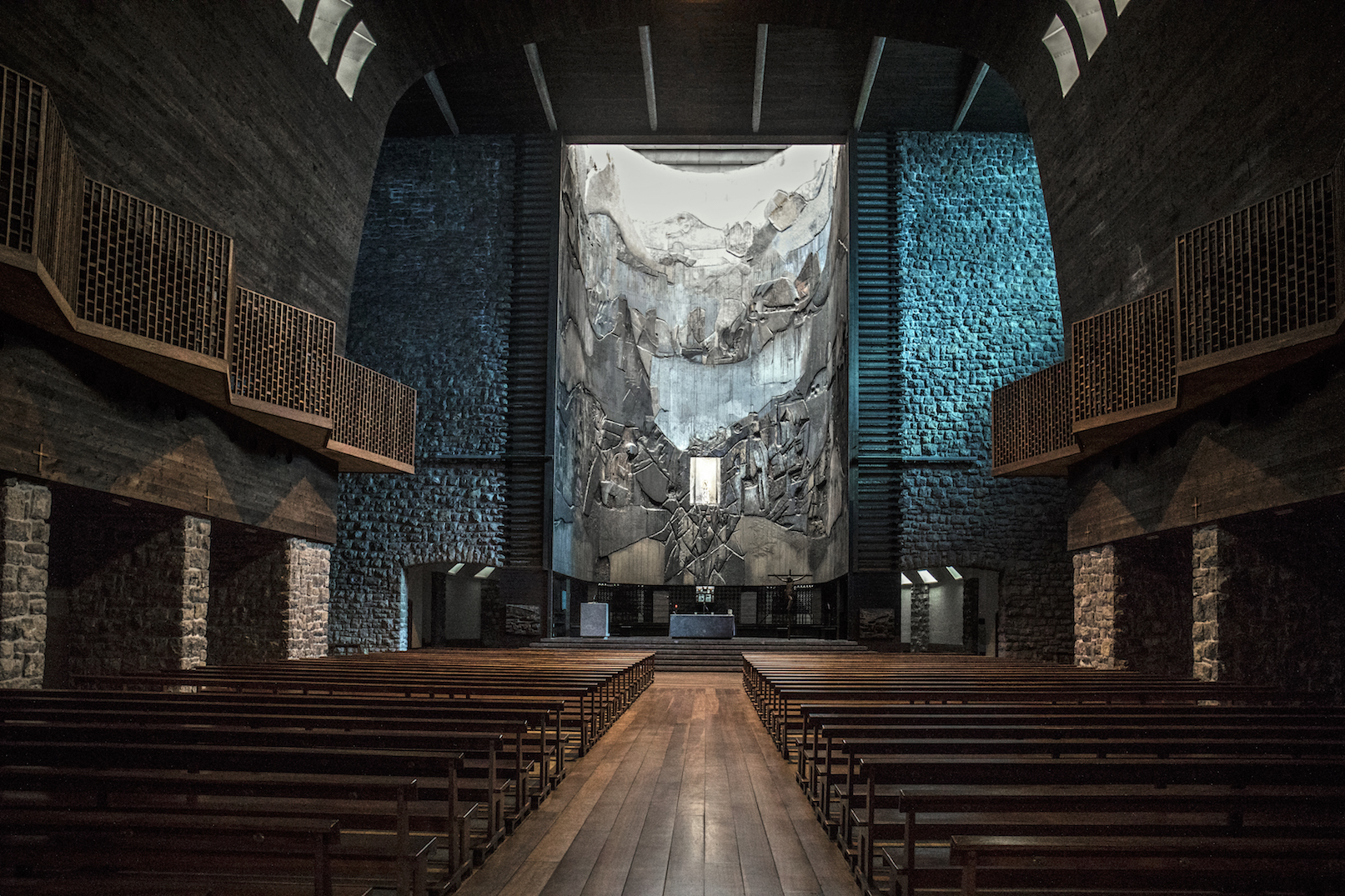
If there is one place in Euskadi where 20th century art meets spirituality, that place is Arantzazu. At its splendid natural location between ravines, beneath the Aizkorri mountain range, Arantzazu (Aránzazu in Spanish) is an amazing place. This has made it the traditional epicentre of peace initiatives.
Its three limestone rock towers cut into diamond-shaped tips draw our attention as we arrive. The belfry and the two towers make up the main façade. The diamond tips are clear references to the thorn bush in which, as legend has it, the image of the Virgin of Arantzazu appeared to a shepherd. He then asked her: Arantzan zu?, which in Basque means: You among the thorns? Thus creating the name of the virgin who has been Gipuzkoa’s patron saint since 1918.
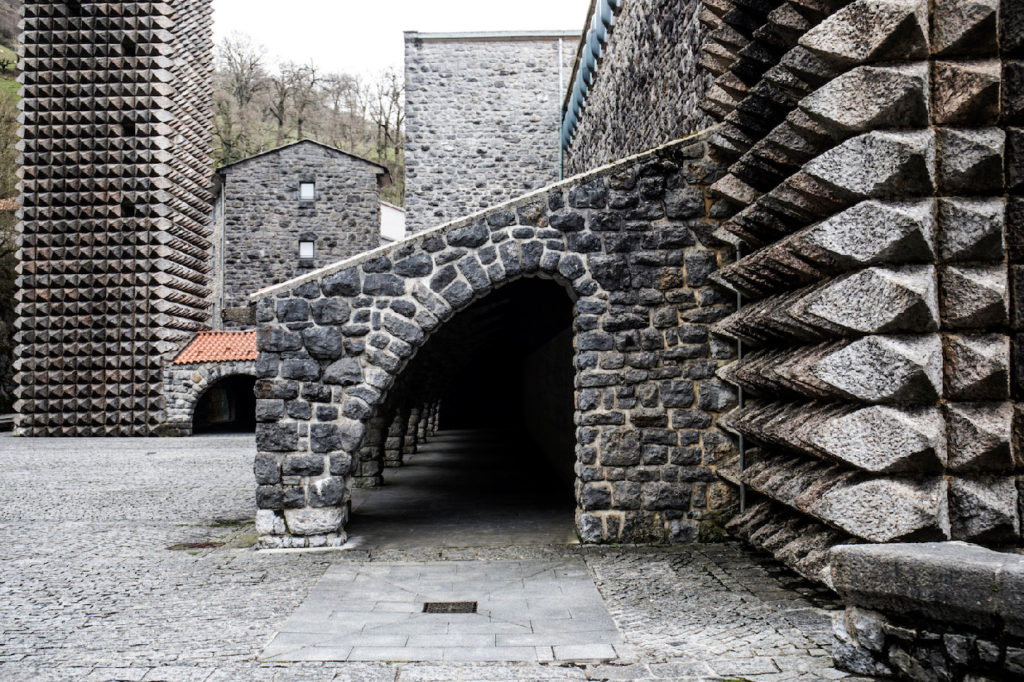
The sanctuary has been home to the Franciscan order since 1514, and went through three fires before the present basilica was built in the 1950s. Looking at it, you wonder how it was possible to build something so radically modern in the Franco era.
Oteiza’s 14 apostles welcome visitors to the sanctuary, the work of architects Sáenz de Oiza and Laorga. Chillida designed the metal doors, and Lucio Muñoz was responsible for the large apse with an altarpiece as a prolongation of the atmosphere of peace at this location.
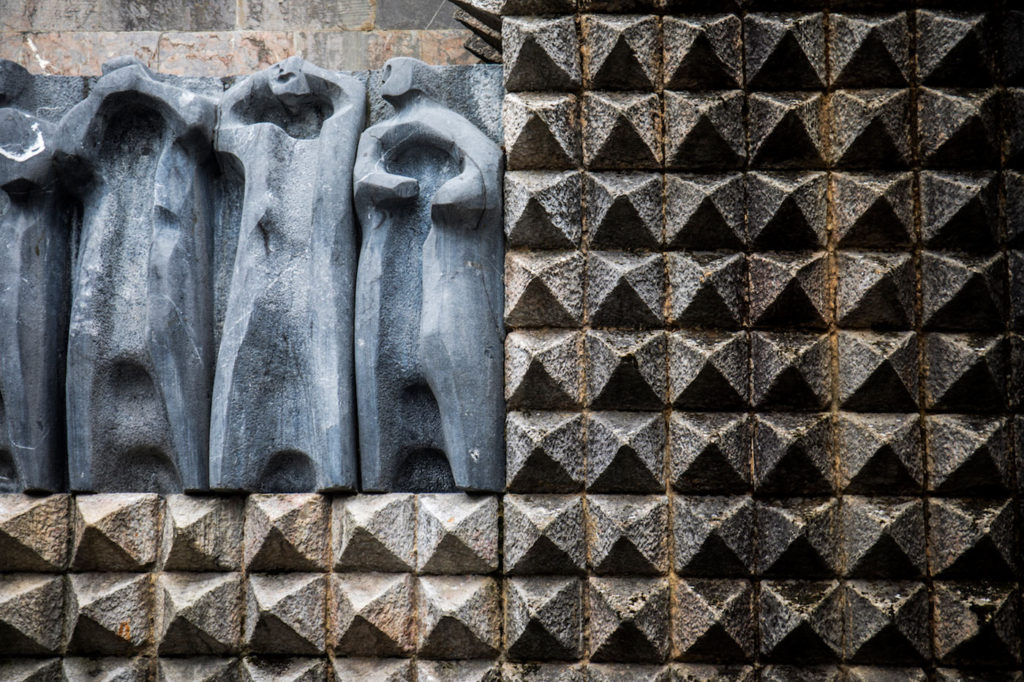
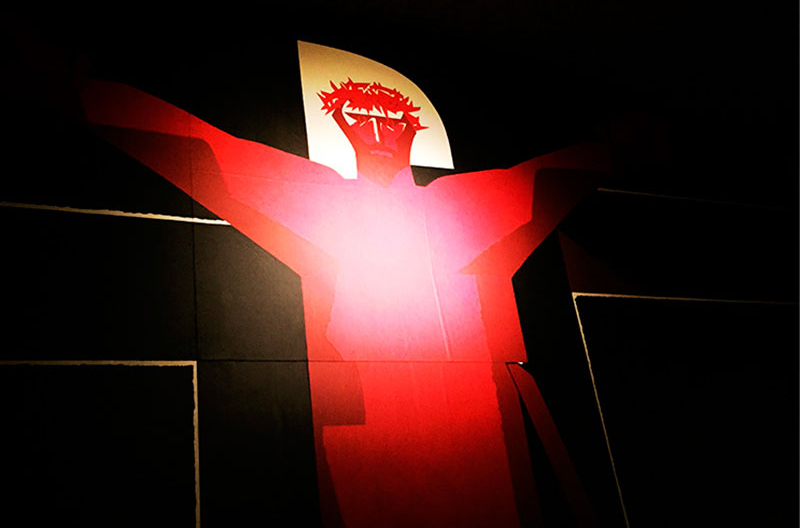
Néstor Basterretxea was responsible for the Red Christ and the other murals in the crypt, making up, in his own words, “a powerful call to the conscience” of human beings.
It was, then, leading 20th century Basque and Spanish artists who created this encyclopaedia of Basque art. But they would find it no easy task. Horrified, the San Sebastián Diocese vetoed their plans in 1955. The Church felt that “the designers’ good intentions have been waylaid by modernist trends which take no account of certain precepts of the Holy Church concerning Sacred Art”.
Thanks to the reformist trends ushered in by the Second Vatican Council, the Nuestra Señora de Aránzazu Basilica finally emerged in 1969. It is now an unquestionable major place of worship.
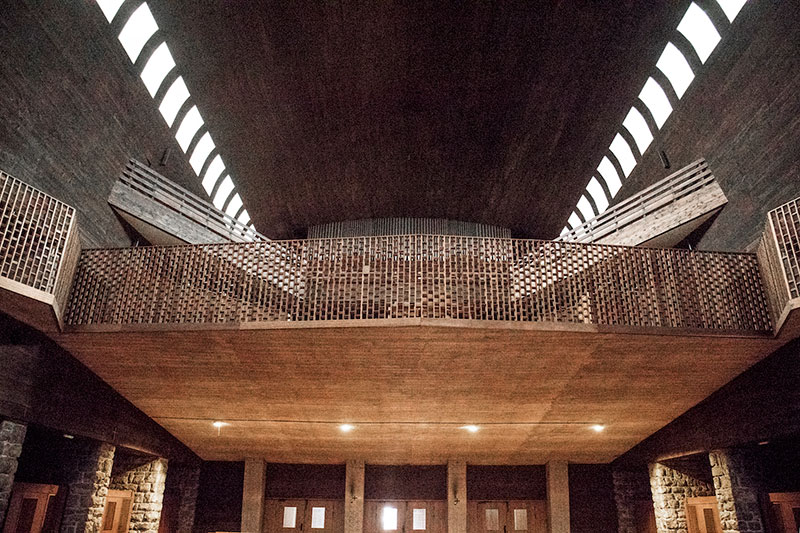
The area around Arantzazu offers a wide range of other activities. Ramblers will certainly enjoy the trek of approximately an hour to the Urbia plains. From here the route continues up to the top of the Aizkorri range. The highest of all the mountain tops, the Aizkorri, is also Euskadi’s highest, at 1,515 metres.
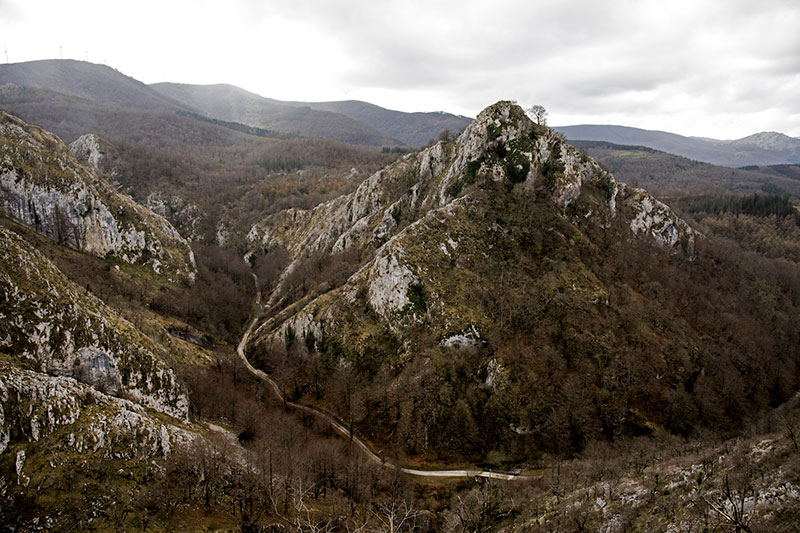
So if we climb up here, we will be standing on the summit of the Basque Autonomous Community. But it is advisable to be in quite good shape for this. The walk is another hour and a half from the plains.
The interior of the mountain tops contains one of Gipuzkoa’s largest caves: the Arrikrutz cave. This is a wonderful karstic feature which is also a must-see. It may be accessed from the road between Arantzazu and Oñati. The latter is also an interesting visit, with an old quarter that has been declared an Official Monument.
Amid sumptuous palaces, stately homes and religious buildings we find the Sancti Spiritus University. This is the main exponent of civil Renaissance art in Euskadi. Between the 16th and 20th centuries it was the first and only university in the Basque Country, and enjoyed the same papal immunities and rights as Bologna, Salamanca, Paris, Valladolid and Alcalá.
A bean stew in Arantzazu is the most popular gastronomic option during this visit. It is available at any of the restaurants around the basilica, or along the winding 10 km road between the sanctuary and Oñati.

On this route we will also find the Shepherds’ School. This provides the knowledge to produce prestigious Basque sheep’s cheeses, such as Idiazabal.
***

